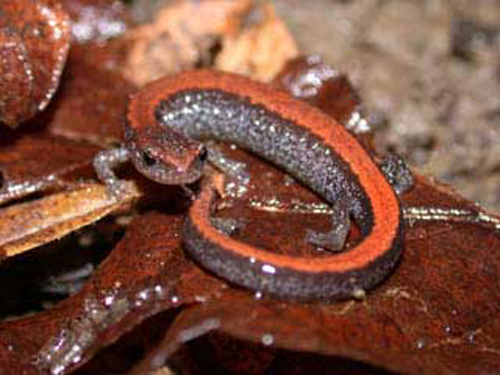The Redback salamander is a member of the lungless salamander family. Adult salamanders in this family do not have lungs but take in oxygen through their skin. Redback salamanders are smooth-skinned and have two color phases. In the color phase that gives them their name they are black with a broad red stripe on their back. In their lead-back color phase they are black and heavily speckeled or mottled with gray, making them appear the color of lead. These are small and slender salamanders. They can be 5 inches long.
The range of the redback salamander is in the northeast from Virginia through New England. They are also in the Great Lakes area and parts of southeastern Cananda. Redback salamanders are the most common amphibian in Connecticut (and in New England) and have no protected status.
Adult redback salamanders are terrestial and live under rocks and logs in woodlands. They are also found under debris in urban or suburban yards. They can live deeper underground as well. Adults are active from late winter into early winter. They hibernate over the winter in underground burrows, sometimes in groups. They have been observed out and about in Connecticut on warm days in December.
Redback salamanders mate in the fall in New England. Eggs are laid under logs, in rotten logs or under rocks and the female has been seen guarding her clutch. She will lay 4 to 12 soft eggs. The larval stage of these salamanders occurs inside the eggs. There is no aquatic stage, the salamanders hatch out as miniature adults.
Adult redback salamanders eat small insects and invertebrates and consume many ants and termites.
